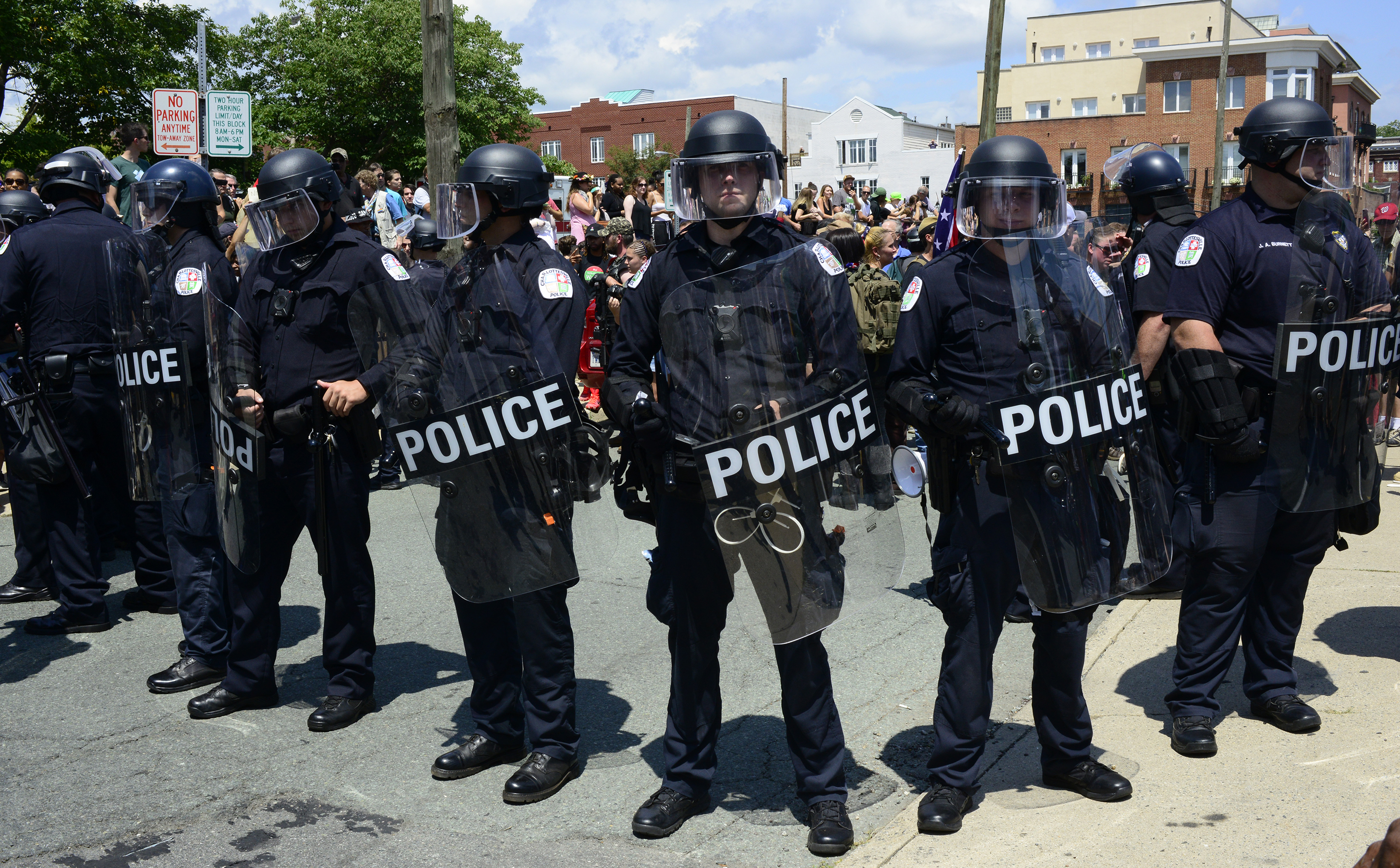Washington, D.C. – When Christopher Brown made the three-hour journey on a bus to Charlottesville, Va., with fellow Howard University students in the middle of August, he was still stunned by the events that had taken place a week earlier when white nationalists marched through the University of Virginia’s campus during the night, holding torches and shouting racist slogans. The following day, the demonstrators rallied around a statue of Robert E. Lee, a Confederate general, located in Emancipation Park. The scene turned violent when a car plowed into a group of counter-protesters, killing one person and injuring 19 others.
Having grown up as an African American in Birmingham, Ala., Brown has always been aware of racial division, but the events in Charlottesville surprised him. “America just hasn’t really gotten to the place that I thought it had,” Brown said. Motivated to take action, he jumped at the chance to join a Howard University service day to support the people of Charlottesville. The effort was coordinated through the university’s Office of the Dean of the Chapel, an interfaith group.
At universities around Washington and beyond, students and professors are also grappling with what the events in Charlottesville, a college town, say about race relations on campuses. “Shocked…just speechless and shocked,” Phronie Jackson, a D.C. native and professor of public health and psychology at the University of the District of Columbia, said of the rally. “You’d think that we’re moving back to an era of Jim Crow, and that’s terrifying.”
Yet others viewed the events as somewhat inevitable in the era of President Trump. “It was surprising to see it, but I was not shocked. It was something that had been coming,” said Rodrigo Posada, a student at the University of Maryland. “Problems with white supremacy and racism are being brought out now, because of this new government condoning such actions.” In the days following the Charlottesville rally, President Trump failed to immediately condemn the white nationalists. He blamed both the protestors and counter-protestors for the violence that ensued.
Another student seemed to agree with Posada, “I wasn’t surprised to see it, because it’s just white supremacy coming forward with a face,” said Kendra Cobb from Albuquerque, N.M., a law student at Howard. “I’d actually prefer to see it, because then I know who my enemies are.”
Mariel Bailey of Denver, Colo., who is working toward a master’s in homeland security at the University of the District of Columbia, was less disturbed by the events. “We’re taught to be apolitical. In our program, if you do anything government related, if you work for Homeland, CIA, FBI, any of those agencies, the president is your boss. We’re taught that whatever he says goes.”
Other students were affected on a personal level. “In daily life, you think about what’s going to be people’s reaction towards you based on whatever they see in the media. So sometimes that affects how you trust people,” said Bader Manef, who grew up in Saudi Arabia and attends Indiana University-Purdue University Indianapolis as a medical student. Manef has found his school’s recent series of events celebrating multiculturalism a helpful way to mitigate racial and ethnic tension on his campus.
Likewise, the Howard students’ pilgrimage to Charlottesville seems to have made a deep impact on Brown: “I learned that change starts with us, especially the change that we want to see personally in this world,” he said. The students from Howard, a historically black university, began their trip at Thomas Jefferson’s former plantation, Monticello, to learn about the slaves that had worked there. They later met with local chapters of groups such as Black Lives Matter and student groups at the University of Virginia. Security guards escorted the students through the streets of Charlottesville to read a letter in front of the statue of Robert E. Lee. This letter pledged their support to those in the community shaken by what had occurred. They also paid their respects at the site where counter-protester, Heather Heyer, had been slain.
“Being there, there were a lot of tears shed from the community,” Brown said of the trip. “I felt like they didn’t have another university that did what we did—travel three hours just to say, we’re in support of you. We could have just wrote a letter and sent it, but we traveled as a pilgrimage to the university. So, I felt like they felt the support more than if they just received another letter.”
Writing by Amanda Mosher
